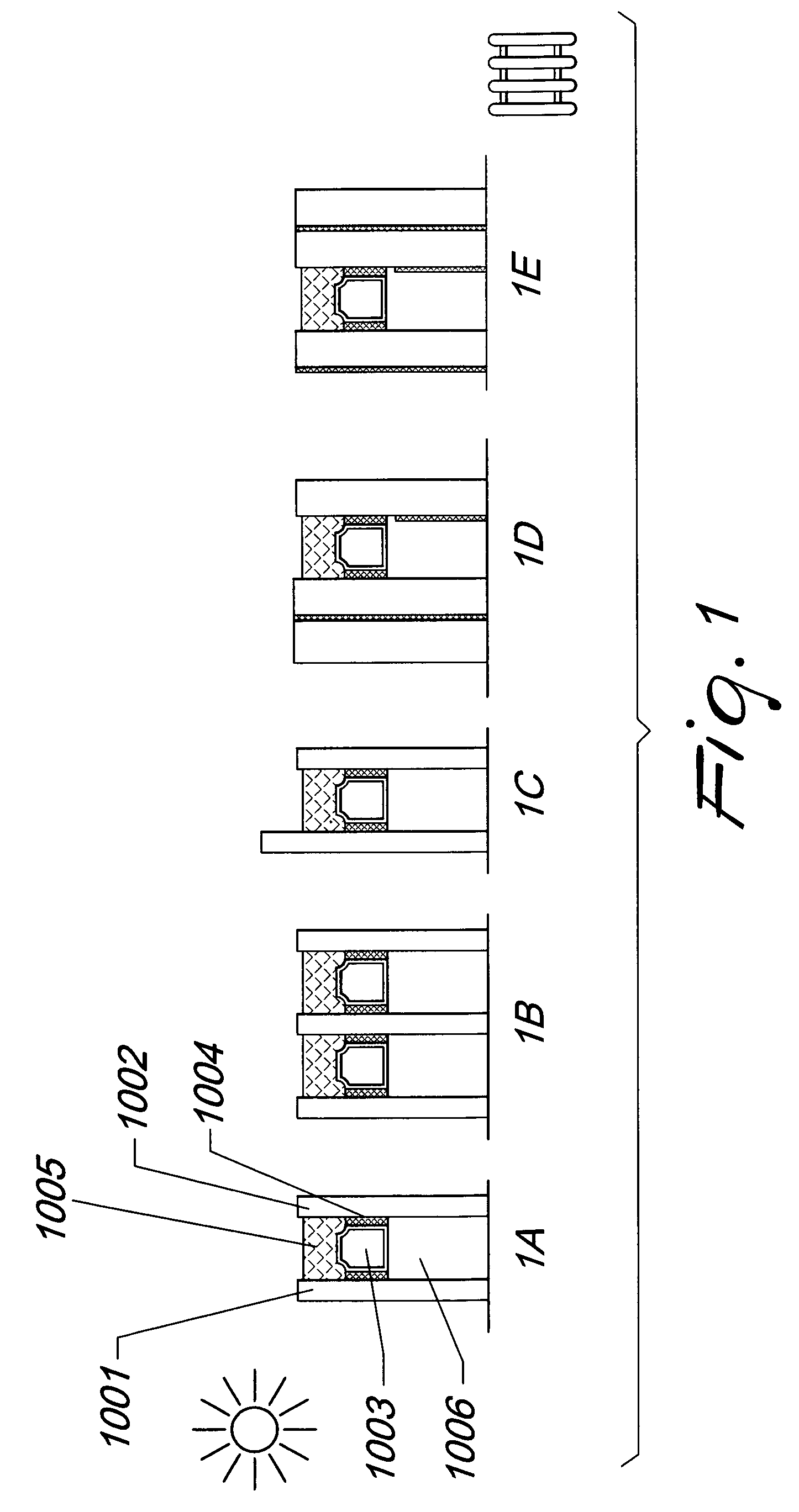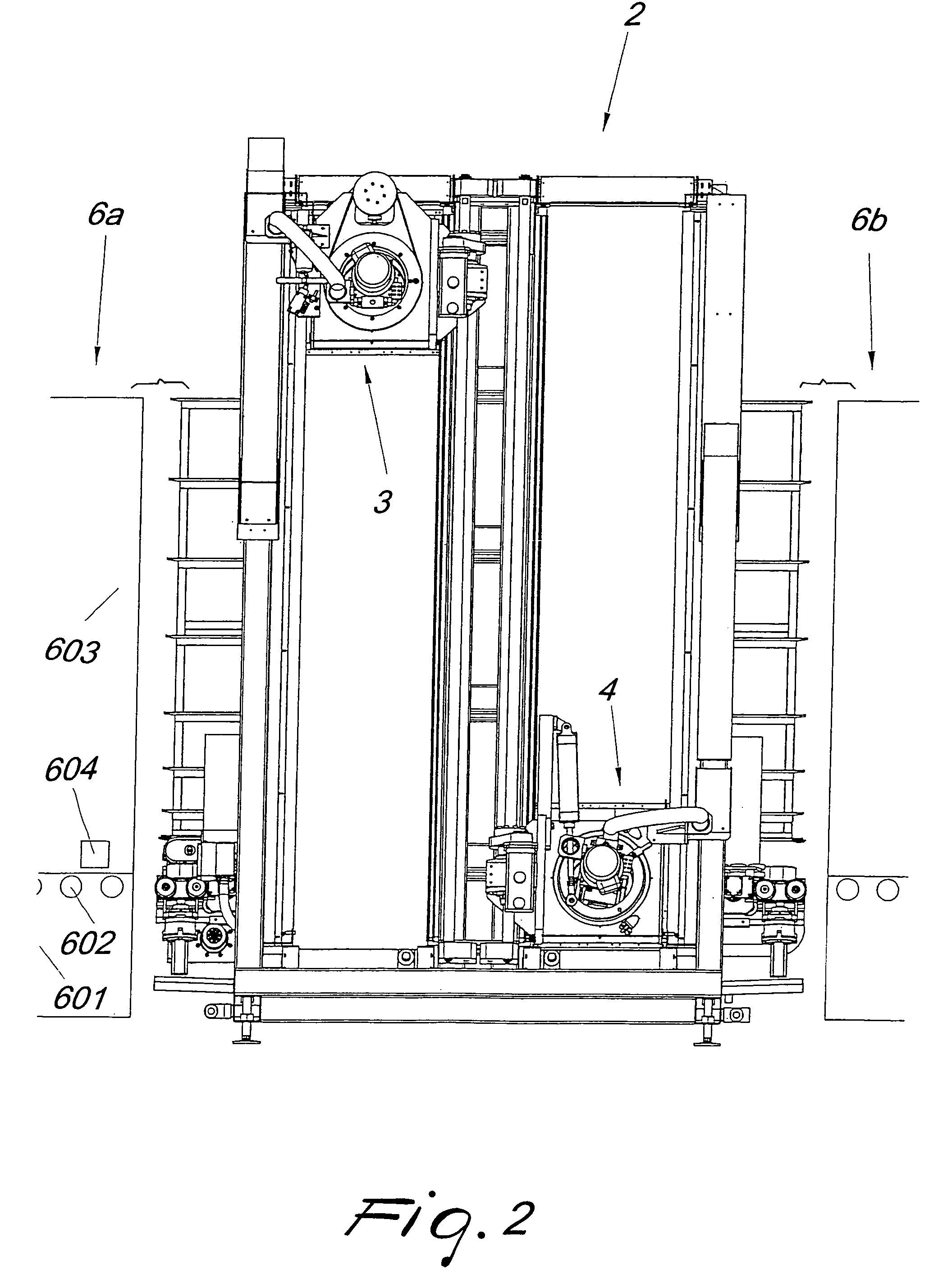Automatic machine for arrissing and grinding the edges of glass sheets
a glass sheet and edge grinding technology, applied in the direction of grinding machines, grinding machine components, large fixed members, etc., can solve the problems of reducing the quality and commercial value of the machine, the arrissing operation is not optimum quality, and the machine is large in bulk and cost, so as to reduce the processing time, reduce the surface irregularities, and eliminate the effect of irregularities
- Summary
- Abstract
- Description
- Claims
- Application Information
AI Technical Summary
Benefits of technology
Problems solved by technology
Method used
Image
Examples
Embodiment Construction
[0058]As described earlier, FIG. 1 illustrates schematically the peripheral portion of the double glazing unit according to an exemplifying series of possible combinations: normal configuration (1A), triple glazing (1B), offset sheets (1C), laminated outer sheet and low-emissivity inner sheet (1D), tempered reflective outer sheet and laminated low-emissivity inner sheet (1E). The two types of sealant used are indicated: the butyl sealant 1004, which has a sealing, function (first seal) and is applied between the lateral surfaces of the frame and the glass sheets, and the polysulfide or polyurethane or silicone sealant 1005, which is intended to provide mechanical strength (second seal) and is applied between the outer surface of the frame and the inner faces of the glass sheets up to their edges.
[0059]FIG. 1 shows that even after the second seal the double glazing unit has two particularly dangerous outer perimeters due to the sharpness of the edges of the glass sheets. It is in fac...
PUM
| Property | Measurement | Unit |
|---|---|---|
| size | aaaaa | aaaaa |
| perimeter | aaaaa | aaaaa |
| hygroscopic | aaaaa | aaaaa |
Abstract
Description
Claims
Application Information
 Login to View More
Login to View More - R&D
- Intellectual Property
- Life Sciences
- Materials
- Tech Scout
- Unparalleled Data Quality
- Higher Quality Content
- 60% Fewer Hallucinations
Browse by: Latest US Patents, China's latest patents, Technical Efficacy Thesaurus, Application Domain, Technology Topic, Popular Technical Reports.
© 2025 PatSnap. All rights reserved.Legal|Privacy policy|Modern Slavery Act Transparency Statement|Sitemap|About US| Contact US: help@patsnap.com



